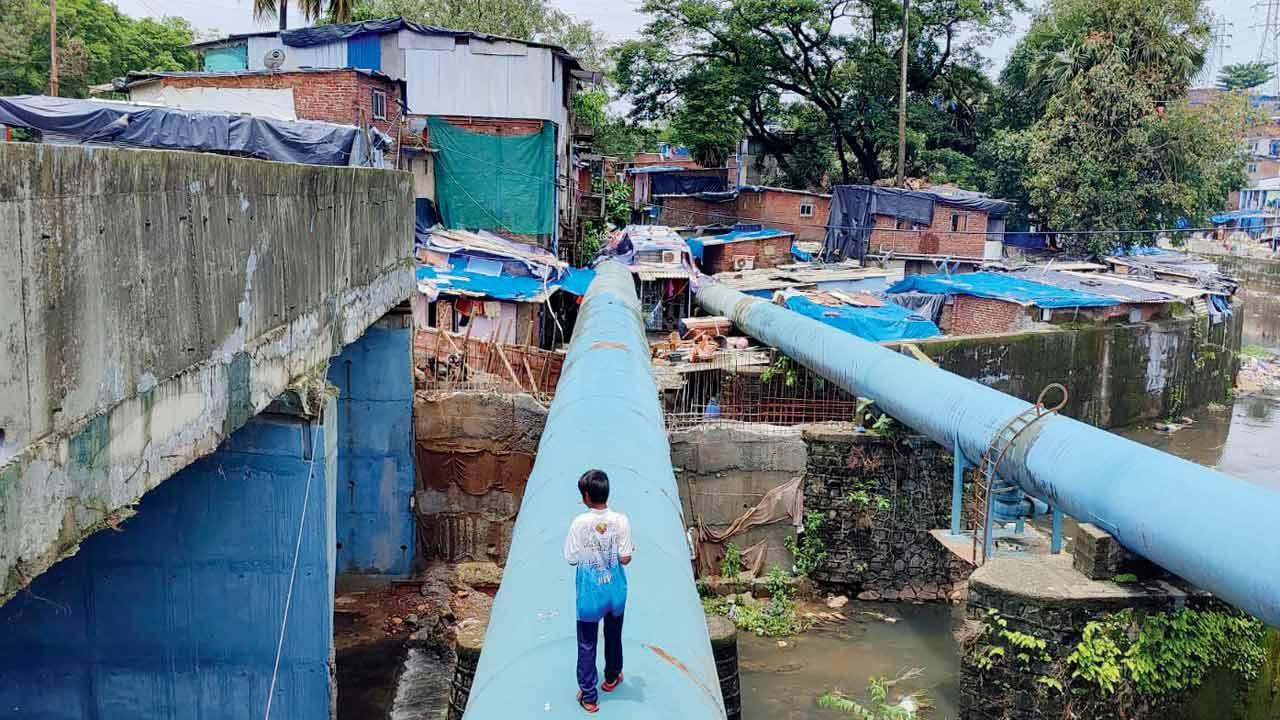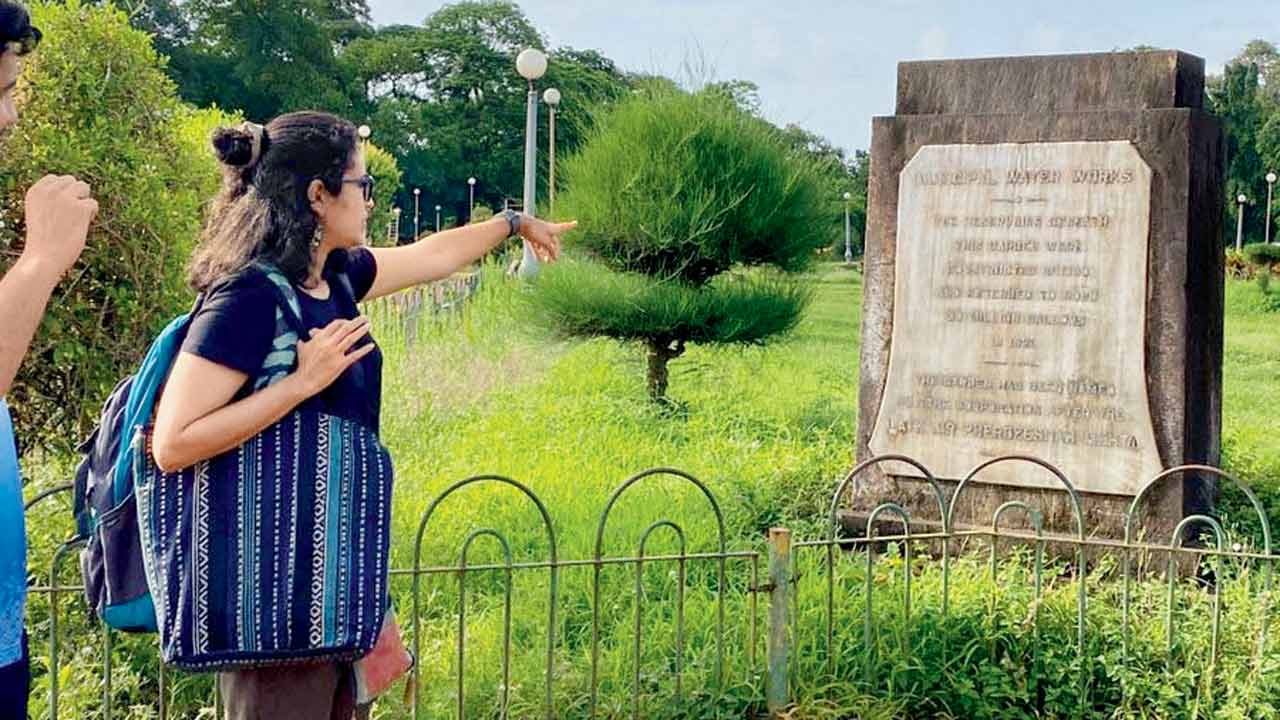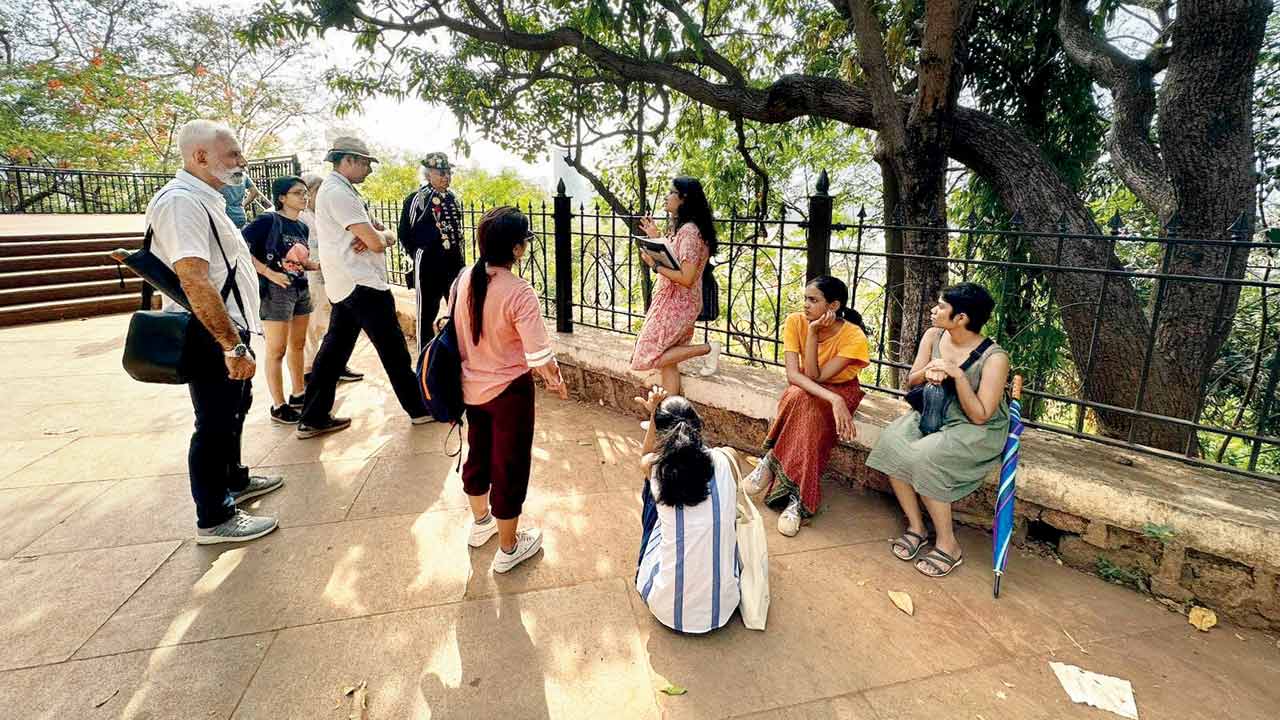Join an experiential walk in SoBo that will follow the journey of water as it makes its way to taps in the city

A child balances while walking on a large pipeline at Filterpada
If waiting for the rains to pick up in Mumbai and battling water cuts have got you curious about the city’s water distribution systems, you’re not alone. The journey of water to our taps at home, along with its historical, social, cultural and political implications have piqued Navi Mumbai-based documentary filmmaker Akanksha Gupta’s curiosity, too. For her, looking at the city through the lens of water is an interesting way to explore it. Her research into the topic led her to curate a walk that traces the footsteps of water in Mumbai, specifically South Mumbai, where she will explore topics including the history of drinking water, stories of migration, and water politics.
ADVERTISEMENT
 Akanksha Gupta points at a municipal water works stone plaque at Hanging Gardens
Akanksha Gupta points at a municipal water works stone plaque at Hanging Gardens
The walk begins at Malabar Hill where the conversation centres around the reservoir beneath the surface of Hanging Gardens, and moves along 10 stops around this location and towards Dhobi Talao. The last stop comes to Framjee Cawasjee Hall opposite Metro Cinema, which stands over the water tank reconstructed by its eponymous businessman and philanthropist.
The two-hour walk will halt at Kamala Nehru Park since it offers a vantage view of Marine Drive. Gupta notes that this bird’s eye view helps to imagine the changing urban cityscape with relation to water. She remarks that the city expands and survives because we were able to get piped drinking water into these parts. For instance, Cuffe Parade, which was developed in the 1900s, and is visible from the park, is at the tail end of the water distribution system and the last point that water will travel to from Malabar Hill.

Participants assemble during a previous walk
Through the course of the walk, Gupta will share interesting stories including how various historical events led to the building of water distribution systems in the city. She reveals, “In the 1800s, the frequent droughts that hit the city could have potentially rendered the city’s ports dysfunctional since ships would have had to be diverted to nearby ports due to the lack of water in then-Bombay. This was one of the driving forces that led the British government to commission the Water Works projects. I found this interesting for two reasons. One, if the ports were rendered dysfunctional, the city would have not flourished into the Mumbai we know today. And two, that the loss of business was what drove the government to commission the projects.”
 The Framjee Cawasjee plaque
The Framjee Cawasjee plaque
To ensure an experiential walk, Gupta will tune participants to the presence of water through sounds such as running taps, water pumps, and water-related activities at Dhobi Talao. She will also present pictures of artworks that use water as a subject including artist Rajyashri Goody’s installation titled What Is The Caste Of Water.
On: July 16; 8 am to 10 am
At:Malabar Hill (meeting point revealed after registration)
Call: 9930086252
Cost: Rs 1,000
 Subscribe today by clicking the link and stay updated with the latest news!" Click here!
Subscribe today by clicking the link and stay updated with the latest news!" Click here!







